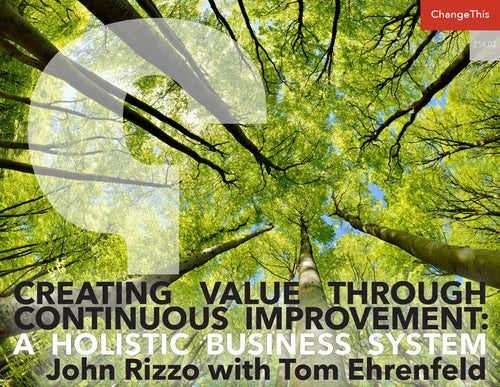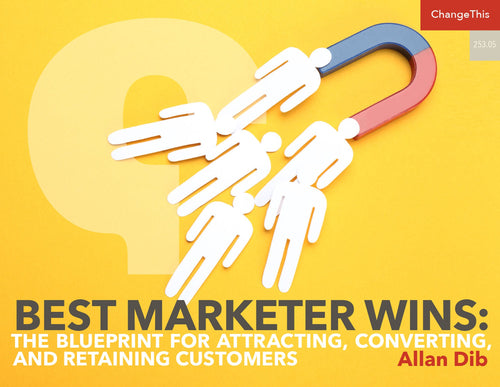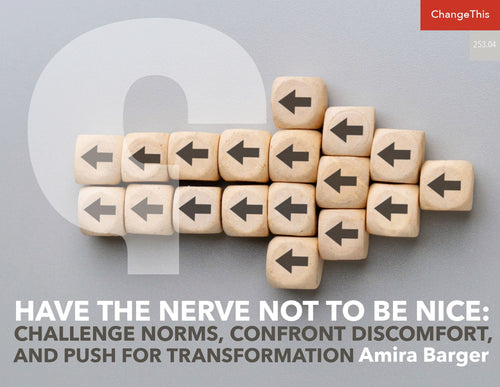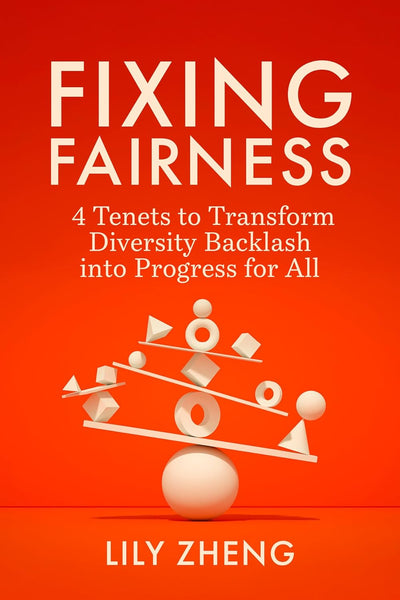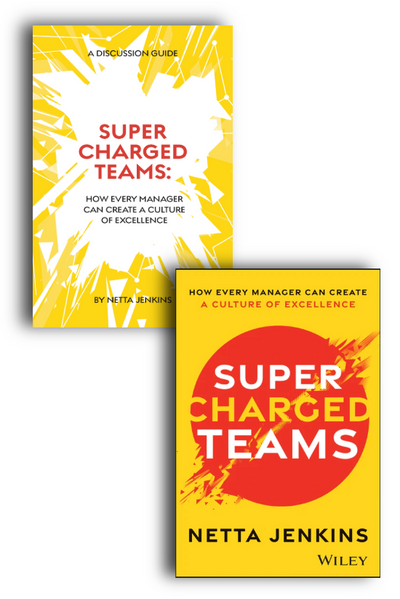A Leader’s Guide to Developing a Foundation for Hope
"Hope is a strategy like no other," writes Jennifer Moss in her new book, Why Are We Here? As the world becomes more uncertain and anxiety-inducing, she urges leaders to treat hope as more than "merely and feel-good sentiment," and to be more deliberate about building it into their company culture. More importantly, she shows you how to do so in a scientifically backed and proactive way.

Hope is one of the best remedies for tackling uncertainty and quieting an anxious mind. It helps people envision a concrete path to a better situation, empowering them to set goals and make plans to reach that positive outcome. Hope also drives action.
We’ve learned that hope can be developed by proactive problem-solving, but research also finds that hope can be developed through productivity, routine, and mastery. It may surprise you how easy it is to tactically approach hope skill-building. It really boils down to infusing hope into the small, everyday actions we take for granted at work so that the existential problems don’t weigh us down.
On an everyday basis, leaders can make a substantial impact. Despite the challenge leaders face today in addressing the more existential threats plaguing their workforce, even incremental change or just an effort to pursue a solution helps people feel more hopeful.
Research indicates that actively engaging in problem-solving, even if the outcome remains uncertain, can significantly boost individuals’ sense of hope and psychological well-being. Research on coping strategies by psychologists Charles Carver, Michael F. Scheier, and Jagdish K. Weintraub suggests that proactive coping, where individuals confront challenges head-on rather than avoiding them, enhances emotional resilience and hopefulness.1
By taking a proactive, problem-solving approach to some of these key issues, organizations can build a hopeful culture. We may not eradicate the stressor, but at least we can work actively toward a solution. And those micro-steps can have an enormous impact on employee well-being and engagement.
Let’s take two of the bigger stressors impacting our workforce today: climate change and financial instability.
HOPE AND CLIMATE CHANGE
During the 2024 World Economic Forum (WEF) annual meeting the topic of hope was everpresent, with an acknowledgment that eco-anxiety is a realistic response to the existential threat of climate change. In an effort to turn apathy into action, WEF launched multiple projects to help young people bring about the change they wish to see in the world.
“All cultures embrace hope as a powerful collective energy that gives meaning to and sustains human existence. Yet, hope isn’t just a state of mind or something that we simply have or buy or wish into existence. Hope, in the nature and climate crisis, happens when our thoughts translate into words and actions large and small,” WEF stated. The organization also called on individuals and organizations to think about how our thoughts, words, and actions might become a “performance of hope” and urged people to share their ideas and innovations on social media using the hashtag #performinghope. Global organizations like EY, Microsoft, the Bayer Foundation, and others signed the “Rise Ahead Pledge” to commit to building social innovations that solve some of these biggest problems facing the world today.2
There are countless ways we can demonstrate hope through action in fighting climate change at work. Here are some effective solutions:
Establish companywide sustainability programs. These programs encourage employees to participate in environmental efforts. This can include recycling programs, energy conservation measures, and green commuting options.
Form employee-led green teams or sustainability committees. These teams can spearhead environmental projects, promote eco-friendly practices, and serve as ambassadors for sustainability within the organization.
Offer regular training sessions and workshops. These sessions can provide employees with knowledge and skills that empower them to take meaningful actions.
Launch engaging campaigns. These internal employee campaigns could include climaterelated challenges, such as reducing carbon footprints, conserving water, or participating in community cleanup events. Recognize and reward employees who actively contribute to these initiatives.
For example, Patagonia’s employee community support includes a “Patagonia Action Works” platform that connects employees with environmental and social causes they care about, encouraging them to engage in meaningful work that can also have financial benefits through grants and donations.
Integrate sustainable practices. Examples of such practices include adopting green technologies, sourcing eco-friendly materials, setting measurable sustainability goals, and developing corporate social responsibility (CSR) programs that focus on environmental issues.
Create solutions-based platforms. Provide ways for employees to propose innovative solutions for reducing the company’s environmental footprint. Encourage cross-functional collaboration and implement the best ideas.
Recognize and reward. Highlight employees who make significant contributions to sustainability efforts. Recognition could include awards, bonuses, or public acknowledgment.
Walk the talk. Ensure that company leaders are visibly committed to sustainability. When leaders actively participate in and champion environmental initiatives, their actions set a powerful example for employees.
Integrate sustainability into employee well-being. Promote activities like walking or cycling to work, healthy eating with local and organic foods, and mindfulness practices that connect with nature.
By implementing these policies and programs, leaders can cultivate a culture of hope and proactive engagement, empowering employees to contribute positively to climate change efforts and feel more hopeful about the future.
COST OF LIVING
Because the rising cost of living is one of the biggest stressors facing today’s workforce, it’s important for leaders to help their employees see a hopeful financial future. It’s highly demotivating when people feel like no matter what they do, they can’t get ahead. This pervasive sentiment has been a major driver of disengagement for a younger workforce that is questioning “What’s the point?” Lack of financial well-being makes people ask, “Why are we here?”
To address the challenges of inflation and cost of living stresses, leaders can implement several policies, programs, and strategies that foster hope and encourage proactive behavior among employees.
Here are three suggestions.
Develop financial wellness programs. These could include budgeting workshops, debt management counseling, and investment education.
Regularly adjust salaries. Make fair salary adjustments to keep pace with inflation and rising living costs. This practice ensures that employees maintain their purchasing power while reducing financial stress. Matching contributions or providing seed money can encourage employees to build a financial safety net.
Develop peer support programs. These programs, which encourage employees to share resources, such as carpooling groups or housing information, can make a big difference, helping build hope through community building.
A number of companies offer supports of various kinds. For example, Intel’s employee resource groups (ERGs) include a financial wellness group that organizes events, shares financial resources, and provides peer support for financial planning. Intel also offers an internal marketplace for employees to buy and sell goods and services.
Salesforce’s internal community support includes “Circles of Success,” where employees can share best practices and resources related to financial well-being. The company also offers an internal marketplace for employees to exchange goods and services, and a comprehensive financial wellness program that includes budgeting tools, retirement planning, and investment education.
Google provides student loan reimbursement and one-on-one financial coaching. Their peer-to-peer community boards encourage Googlers to share resources like financial advice and tips.
PricewaterhouseCoopers (PwC) has a financial wellness program that includes access to personal finance coaches, financial literacy courses, and an online portal where employees can track their financial health. PwC also encourages resource sharing among employees through internal forums and workshops.
By implementing these policies and programs, leaders can create a supportive environment that mitigates the impact of inflation and cost of living stresses, fostering a sense of hope and proactive engagement among employees.
THE PATH FORWARD
As we navigate the multifaceted challenges facing today’s workforce, it’s crucial to recognize that hope is not merely an abstract concept but a mission for our times. Jane Goodall, renowned primatologist and anthropologist and author of The Book of Hope, writes, “Hope is what enables us to keep going in the face of adversity. It is what we desire to happen, but we must be prepared to work hard to make it so.”3
Burnout, mental illness, financial stress, and the overarching threats of polycrisis and climate change have left many employees feeling overwhelmed and hopeless. These drivers of despair are formidable, yet they can be mitigated through deliberate and proactive problem-solving approaches that foster a culture of hope and resilience.
Implementing proactive problem-solving strategies can significantly impact how employees perceive and respond to these challenges. By setting clear goals and empowering employees to take initiative, organizations can cultivate a sense of mastery and control. This not only improves individual well-being but also enhances collective morale. For instance, engaging employees in sustainability initiatives or financial wellness programs provides tangible avenues for them to contribute to meaningful change, reinforcing their sense of purpose and agency.
Maintaining job security and avoiding layoffs are critical components of fostering hope in the workplace. In times of economic uncertainty, ensuring stable employment can alleviate significant financial stress and promote psychological safety. Companies that invest in reskilling and upskilling their workforce demonstrate a commitment to their employees’ long-term success, further building trust and loyalty. Likewise, creating an environment where employees feel safe to voice concerns and take risks without fear of retribution is essential for sustaining hope and innovation.
By prioritizing hope, we can create a work culture where everyone feels valued, supported, and empowered to make a difference. When we share a belief that the collective can achieve more than the sum of its parts, we can foster environments of hope where every individual, regardless of their struggles, can contribute their unique strengths and perspectives.
Charles Snyder’s hope theory tells us that hope is not a mere abstract concept but a quantifiable psychological construct.4 It serves as a powerful antidote to uncertainty by equipping employees with emotional resilience and determination to persevere through tough times.
As organizations grapple with the growing economic, sociological, and technological challenges of rapidly changing times, it’s evident that hope is not merely a feel-good sentiment but a scientifically backed strategy. By nurturing hope within the workplace, we empower individuals to not only envision a future but to actively shape it.
Adapted from Why Are We Here?: Creating a Work Culture Everyone Wants by Jennifer Moss. Published by Harvard Business Review Press. Copyright © 2025 Jennifer Moss. All rights reserved.
About the Author
Jennifer Moss specializes in future-focused leadership development, expertly balancing employee well-being with performance. As an award-winning writer and internationally acclaimed keynote speaker, she specializes in transforming workplace culture using data-driven leadership strategies. Her book The Burnout Epidemic tackled employee burnout and was among Thinkers50’s 10 Best New Management Books for 2022.


